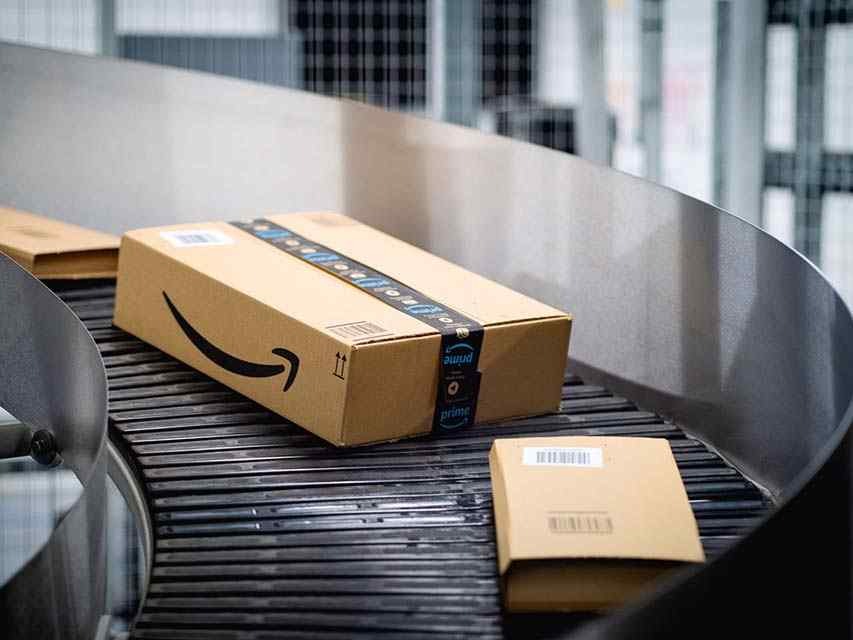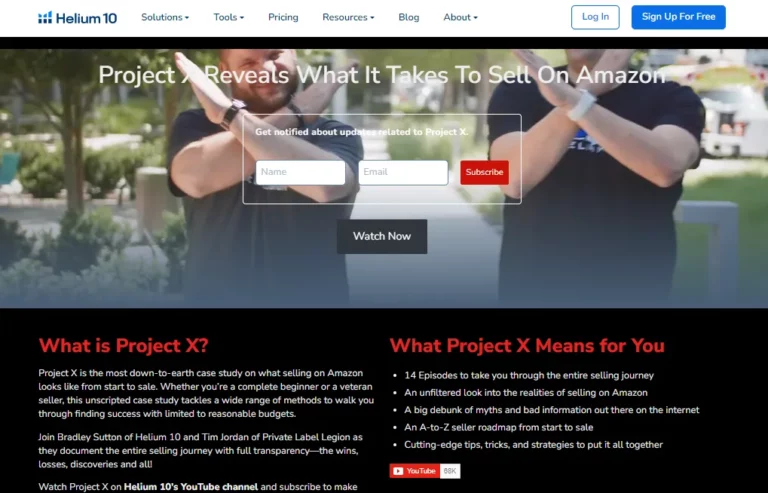Performing the right way of Amazon product research can be helpful in several ways, but how to do online product research for Amazon selling? All this process of performing online product research for Amazon selling can work in several ways; as beginners, Amazon sellers usually get stuck over this step and do not know how to do online product research. Well, in this article, I have mentioned some of the free and paid tools and practices you can perform for Amazon product research.
The success of your Amazon product listing is key to the success of your product. But how do you know what information potential customers want to see? You can research the online market and see which products are selling, who your competitors are, what features consumers like, and much more. In this blog post, we'll explain everything you need to know about researching an upcoming product on Amazon or the steps you need to take before selling on Amazon.
You'll learn about different kinds of research that may be useful for new sellers and get some general tips on conducting your own research for a future Amazon product listing. This will help you tweak your product and increase its chances of selling on Amazon.
What is Product Research for Amazon Sellers?

Product research can be defined as the process of gathering information about the products you want to sell. This information can include the demand for the products, the competition around the products, and other factors that can affect the success of your product launch. If you're an Amazon seller, product research is an essential part of Amazon selling operations. This is because Amazon is an online marketplace that brings together buyers and sellers from all over the globe.
Without proper product research, you cannot know if your product will sell on Amazon. Product research also helps you create an attractive product listing for potential customers. If your product listing doesn't attract buyers, it's unlikely that anyone will buy your product.

Get 20% OFF on Helium 10
SPECIAL OFFER
Use our coupon code “BLOGE6M20” to buy helium 10 and get 20% OFF for continous 6 months. Hurry up!
20% OFF

Save $549 on Jungle Scout professional plan
BEST VALUES
Buy annual professional plan of Jungle Scout and get a chance to save up to $549 for each year.
$549 OFF
Types of Research for New Amazon Sellers
Before you dive into any type of research for your new product, make sure you've done the following first:
Define your product before listing it on Amazon: The first step to successful selling online is to have a product that people want to buy. Defining your product helps you to think about why someone would want to buy this and how you can make it the best option for your audience. For example, let's say that you decide to sell a bookcase. After some research, you find that most people buy bookcases to display items, such as books or figurines. By focusing on how your bookcase can be used to display items, you now have a product that people want to buy.
Once you've defined your product, you can now create your listing. The most important thing to include in your listing is a clear call to action. You want to make it as easy as possible for people to buy your product. One way to do this is to ensure that your description includes a purpose.
Define your target customers before selling your product on Amazon: Choosing the right category for your product on Amazon can make a big difference when it comes to sales. To get the most out of your product and reach the right customers, you must define your customer. This means choosing a group of people who have a common trait or characteristics that your product is intended to serve. Customers can be defined by age, location, profession, income, or other factors.
For example, if you're selling shoes, you might consider which types of people would most likely be interested in that particular product. You might conclude that active people would most likely be interested in running or walking shoes or that people with certain foot types such as large or small feet, wide or narrow feet, etc. would most likely be interested in that particular product with considering the comfort.
Put together your product information sheets (PIS) before product listing on Amazon: Producing PIS is an important step toward product listing. It's advisable to create PIS as soon as you have finalized your product details. PIS is an important marketing tool for your product, as you can use it to promote your product on social media, email campaigns, and on your website.
PISs should include all the vital product details, customer reviews, and information about your brand. It shouldn't be more than a few paragraphs long and should be written in clear and concise language. You can use your PIS to get feedback from customers and address any issues they have. PIS will also help you to create best-selling keywords for your product, which will help your product rank higher on Amazon search engines.
Create a mock-up for your product listing before final listing on Amazon: It is advisable to create a mock-up for the product listing you intend to upload on Amazon before actually uploading it. You can do this with the help of image editing software, like Adobe Photoshop or GIMP. You can even use certain online tools to create a mock-up for your product on Amazon. Once you have created the mock-up, you can start adding the product details and description to it.
This will help you in checking whether the details you have added to the mock-up are the same as you have added to the product description on Amazon. You can also add the product specifications here. If you are creating a new product listing and not creating a mock-up, then it is essential to proofread the product description thoroughly before uploading it. So, now that you're ready for some initial steps for research, here are some of the main aspects that one should look after before using different tools for Amazon product research:
Market Research: Market Research is the overall analysis of your target market. You'll want to see if this market is growing or shrinking, if there's enough demand for your product and if the product has any regulatory red flags. This research is essential if you want to ensure that your product will be profitable.
Market research will also help you to identify your target audience. You'll want to see what their needs and preferences are, where they gather information and how you can reach them. You can take the help of different available research tools; you can use Google trends (free) to understand the overall trend on that particular product or niche that it belongs, or maybe get along with some of the paid tools such as Helium 10, Jungle Scout, Viral Launch, etc.
As you conduct your market research, remember that everyone has different preferences and needs. As you come across potential customers and clients, try to put yourself in their shoes and think about what they might be looking for. One of the best ways to conduct market research is to start a blog or website. You can test out what type of content people are looking for, and you have the option of segmenting your readers by giving them different sections they can click on to find what they're looking for.
Competitive Analysis: Competitive analysis is basically a type of research that looks at your competition. You'll want to see what your competitors are offering, the prices they're charging, and the marketing strategies they're using. You'll want to use this research to see what you can do to stand out.
Competitive analysis is a great way to see what your potential customers are asking for. It's a great way to see what they are clicking on, what they are interested in, and how you can position your business to meet the needs of your customers. With this information, you can improve your own marketing strategies, and you can also create content that will help you to understand your customers better and create a better experience for them.
Product Information Sheets: While a basic product description might be enough for a brick-and-mortar shop, it won't cut it on Amazon. You need to create a PIS that grabs customers' attention and persuades them to buy your product. To do this, you'll want to ensure your PIS is detailed and full of relevant information to your customer. Amazon is a very data-driven company, and they closely monitor its profitable products. From this data, Amazon learns which product details were most important to customers, and they replicate those details in future products.
This type of research is essential if you want to create a product listing that sells. The PIS will include information like the product title, images of your product, a description of your product, and more. If you want to sell on Amazon, you must have a detailed PIS.
Complete Guide to Perform Product Research for Amazon:
Below mentioned are some of the common ways that can be used to perform Amazon product research (both free & paid):
Google Trends Research
Google Trends is a free tool that shows you the popularity of search terms over a given period of time. You can use Google Trends to see which products are being searched for the most and which ones are decreasing in popularity. You can also see if a particular type of product is trending upwards or downwards. You can also see if a particular term is being searched more in one geographic location over another. For example, say you're thinking of selling yoga mats.
If you type “Yoga mats” into Google Trends, you'll see that interest in yoga mats is not evenly distributed across the United States. Instead, you'll see that some areas have a higher interest in yoga mats than others. This can be helpful if you're thinking of launching your product in a specific region.
Amazon Keyword Research
As an Amazon seller, you'll need to do keyword research to find out what people are searching for when they come to Amazon. You can then use this information to create product listings that target these keywords and entice potential customers to buy your product. Amazon has its own keyword tool that you can use to get started with keyword research. Simply go to the “Keyword Explorer” section of Amazon Seller Central and enter a product category. The keyword tool will then show you the most searched keywords in your chosen category. You can also click on each keyword to see the monthly search volume for that word.
Consumer Sentiment Research
As an Amazon seller, you want to make sure that you're only selling products that people want. Consumer sentiment is the way people feel about products and brands in general. You can use a website like Upwave to learn more about consumer sentiment. Upwave is a website where you can enter the product you're planning on selling. The website will then give you information like how people feel about the product, what their needs are, what they like and dislike about it, and more. This can help you refine your product so that it's more attractive to consumers. It's also essential to research if you want to avoid regulatory issues with your product.
Using third-party tools for Amazon Product Research
You can use different third-party tools rather than just using Amazon seller central, Google Trends, etc. You can use tools like Helium 10, Jungle Scout, Viral Launch, etc., but from my prior experience with these tools, I would recommend you to move on with Helium 10, as it offers a whole bunch of features that can not only help you in product research but also in keyword research, PPC campaigns, Inventory management, etc. In addition to that, you can also get yourself 50% OFF on Helium 10 using one of the links/offers mentioned below.
These Amazon seller suites offer different tools like product research tools, keyword research tools, Amazon PPC campaign tools, and much more. So, getting with these third-party tools can be a better choice overall to kickstart your Amazon selling operations.
API Based Research and Amazon Seller Program
If you're a more advanced Amazon seller, you can use API-based research to gather information about your product. API stands for Application Programming Interface. You can use an API to pick the same data from different websites. This can be helpful if you want to collect data from several other websites simultaneously. For example, if you find out the price of a particular shipping company, you can enter their URL into a tool like Ahrefs. Ahrefs will then pull in the data from that URL and give you the necessary information. The Amazon Seller Program also offers a ton of different data sources. You can use this program to find information about your product and gather data on your competitors.
You can find out which sellers are selling similar profitable products to yours and collect information about their pricing, shipping times, and more.
End-product of performing Amazon Product Research
Amazon product research can help in multiple aspects; these different aspects can be really helpful in delivering the best value to the Amazon seller while upscaling them in the overall selling operations; as an end result, you can get data being available for certain products such as profit margin, demand products, potential profit, product ideas, and much more, resulting into discovering high-profit margin products, and increasing your overall sales volume.
As an Amazon seller, you need to look after:
- The profit margin of the product
- Getting the right product ideas
- Having an eye over price range and competitive prices
- Keyword Search volume for that certain product
- Sales Performance (Helium10)
- Sales Estimate (Helium10)
Top FAQs related to Amazon Product Research
What is Amazon Product Research?
Amazon product research is a process of gathering as much information about a potential product as possible before taking any action on it. It’s especially important if you’re planning to launch a new product or service. In addition to researching competitors and customers, Amazon product research involves looking at the product itself.
Which tool is best for Amazon Product Research?
Helium 10 can be considered one of the best Amazon product tools in the market; not only does it offers product research, but it can also help in keyword research, sales estimation, inventory management, and much more.
Can I use Google trends to perform Amazon Product Research?
Yes, you can use Google trends to perform product research for Amazon; it can help you give an overview of what are the current trends related to a certain product that you might be looking forward to, whereas you can use other dedicated tools like Helium 10, Jungle scout, etc. to get in-depth analysis.
Which is better, Helium 10 or Jungle Scout?
Helium 10 can be termed as a much better tool in terms of performing Amazon product research and other similar operations; whereas Jungle Scout offers some excellent features, Helium 10 provides a much cleaner user interface to get along with.
Why is customer sentiment research important in Amazon Product Research?
Customer sentiment research can be helpful in a number of ways as it can help in making things better by understanding the reaction of the audience for a certain product, this way, you can perform even better targeting for your Amazon selling operations.
Conclusion: Is Amazon product research helpful in Amazon selling?
As an Amazon seller, product research is an essential part of the product launch process. You'll want to do as much research as possible before you get your product listed on Amazon. As friendly advice, I would suggest that when you are doing your research, make sure to keep an eye out for anything that might cause problems with your product listing. This includes things like intellectual property issues, regulatory issues, or compliance issues. Avoiding these issues will help you protect your business. To do this, you can use tools like Google Trends, the Amazon keyword tool, and Helium 10 to gather competitive data. The more information you collect before you get your product listed, the more prepared you'll be for success.
Whereas using the third-party apps is something I would highly recommend, you can use these Amazon seller tools to perform an in-depth product research strategy, analyzing Amazon's best-seller list, hunting down potential products while looking for different aspects of other listed products under product price, monthly sales, etc. If you are new to this ecosystem of Amazon selling operations, you can start using the freeways, but a full-fledged tool will help you give a better kickstart. Hopefully, this blog on Amazon Product Research might have helped you by answering some of the common questions and queries you might have






